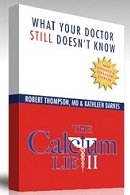 |
||||||
A muscle imbalance involving the piriformis muscle is a factor in many cases of sciatica. It causes pressure to be placed on the sciatic nerve. Such imbalances can develop through a traumatic event, or through lifestyle, especially because of factors such as lack of exercise,
sitting too long,
poor posture or even over strengthening one muscle group while ignoring the opposing muscle set.
Is Easily Avoided |
||||||
|
If you're suffering from any type of back pain, I highly recommend this resource because you deserve all the help you can get. Something in this excellent collection will surely help you and the other 100 tips will be a bonus. |
Out-of-Balance Muscles Cause Pain
If opposing skeletal muscles are not properly balanced the joints and surrounding muscles tend to become stiff and have problems. Think of the tires on your car - they need to be balanced when installed.
Symptoms of an imbalance include muscles that are short, tight, contracted and are unable to relax to allow proper movement. The tightness can lead to painful spasms.
The causes of imbalances of muscle groups include age, repetitive motion or bending, too much, too little or unbalanced exercise, and injury. If your muscles are out of balance they pull your bones and joints out of their normal position and causing stress and uneven pressure.
Examples of How Muscles Become Imbalanced
A good place to think of imbalanced muscles is the paired quadriceps and hamstrings - the largest muscles in your legs. When you move your leg forward, the quadriceps (front of your thigh) shortens to move the femur (upper leg bone) upward. As it shortens, the muscle on the back of your thigh that attaches your knee to your buttocks (the hamstring) has to relax to allow the movement. When balanced in strength, these muscles keep the knee functioning properly. However, for most people, the quadriceps is disproportionately stronger that the hamstrings. This is especially true in, for instance, competitive cyclists or in certain types of weight lifters.
Hip position and spinal curvature are determined by numerous muscles. From sitting too much to overdoing it in sports, if your muscles are chronically out of balance, you're in trouble. Here is an illustration of excess spinal curvature which again can result from muscle imbalances.

Piriformis Muscle Imbalance
The piriformis muscle turns your leg so that you feet point outward (external rotation). If you sit with your legs separated and your feet pointing outward, your piriformis muscle is in a shortened position. If the sitting is prolonged and there is a lack of exercise, it gets tight and weak. For more details specifically about the piriformis muscle and its connection to sciatica read the page
Sciatica Piriformis Syndrome.
See more very good information and a short video about muscle imbalances, how they develop and how they might affect sciatica or other muscle and joint issues
Here is a Pain Relief System (click on one of the two links/pictures below for more information) that is proven and backed up by thousands of stories of real life pain relief (read some examples). It's a system that teaches YOU how your body works, how to identify the cause of your pain and the exact steps you can take to eliminate it!
With this system you will learn how you to eliminate any back/sciatic pain you have now as well as how to prevent future pain. Being better informed, you will also know the right questions to ask if you visit a doctor, chiropractor or physical therapist in the future. Make a decision to take control of your own health today.
|
Keep up to date with valuable insights into pain management via a healthy lifestyle. Receive the monthly Natural Pain Relief Guide Newsletter. News articles, health tips, specials, freebies. Enter your email and name in the form to the right. |
Relieve your pain - approved medical device increases circulation and healing.
The contents of this site are intended for educational and information purposes only.
You have a right (and a responsibility) to educate yourself regarding health matters.
The information presented here is not meant to diagnose, prevent, mitigate, treat, or
cure any disease. If you have health concerns, consult a nutritionally-oriented health
professional and take responsibility to become educated in caring for your own health.










New! Comments
Have your say about what you just read! Leave me a comment in the box below.